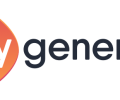At easygenerator we are in the finishing stages of our latest version. This is the first version I had a say in, so I’m quite exited, a real milestone. We started working on it at the beginning of the year. The plan was to finish it in April. The good news is that it is ready. We are setting some dot’s on the i’s and are doing some extra work. But it will be available before the first of April. Not only is it ready on time, I’m also very proud of the functionality we have created. We will post a blog on our corporate blog with the details within two weeks.
This does mean that we are already preparing for the next version. We are in the stage where we need to decide what to do and what the priorities are. One of the subjects that is on the list are the Learning objectives. I’m not happy with the way we have implemented them in the current version. I addressed the topic of learning objectives in my blog on output learning and I tried to work from there.
When developing new functionality, we usually start with a document that describes the functionality in global terms. After some discussions we create user stories. They are estimated, decided on and then designed and build. Today I wrote the first draft document on learning objectives. Since I’m no specialist on that topic I’m looking for feedback. So I want to share this document with you and hopefully I will get a lot of feed back on it, so I can improve this. You can add your comment to this post or mail me.
Corporate learning always starts with a problem or a challenge. Based on the problem you have to define the ‘global learning’ objective. It can be something like: Being able to work with a new system, being able to apply new rules and regulations, know how to handle complaints, anything. The global learning objective is the flip side of the problem you try solve; it is the target you set for the course.
Before you can add more detail to your objectives you must have clarity on:
What does the learner need to know or to do and who needs to be able to do or know that. And finally is there a minimum knowledge of experience the learner has to have before he can start.
When you know the problem, your global learning objective, your target audience and your prerequisites you can define the detailed learning objectives. They are usually a split up of the global objective.
How could this be supported in easygenerator?
When you create a new course you can fill in the Learning objective form (optional). You describe the problem, the global learning objective, the target audience and the prerequisites.
Then you can add one or more detailed learning objectives. You can give a weight (a number) to each objective. You can indicate which score (per objective) needs to be achieved by the learner. If they score sufficient on all detailed learning objectives, they have passed. You can indicate whether or not you want this information published.
When published, a page will be created with the information from the form that you can include in the course. The learning objectives will be part of the scorm publication and the stand alone (HTML) publication.
Connecting the learning objectives to pages (content and questions)
After this you create the structure of your course with content pages, questions et cetera. On each page you can indicate to which detailed learning objective they relate, this can be more than one. They are presented in a list and you can check the relevant ones. You can add a weight to each selected objective, the original weight points are also shown. The total assigned points will be added to the learning objective form. It is possible to add an objective from the page, it will also be added to the learning objective form.
Checking
In the learning objective form you can get an overview of assigned points per detailed learning objective. The total assigned points are shown behind the original weight points. If they don’t match the author can either change the weight points on a course level or on the page level. After this the author can create the content for the course.
I’m really curious what you think about this, does it work for you, or should we do it in an other way. I would be very happy if you want to share your thoughts with me.




